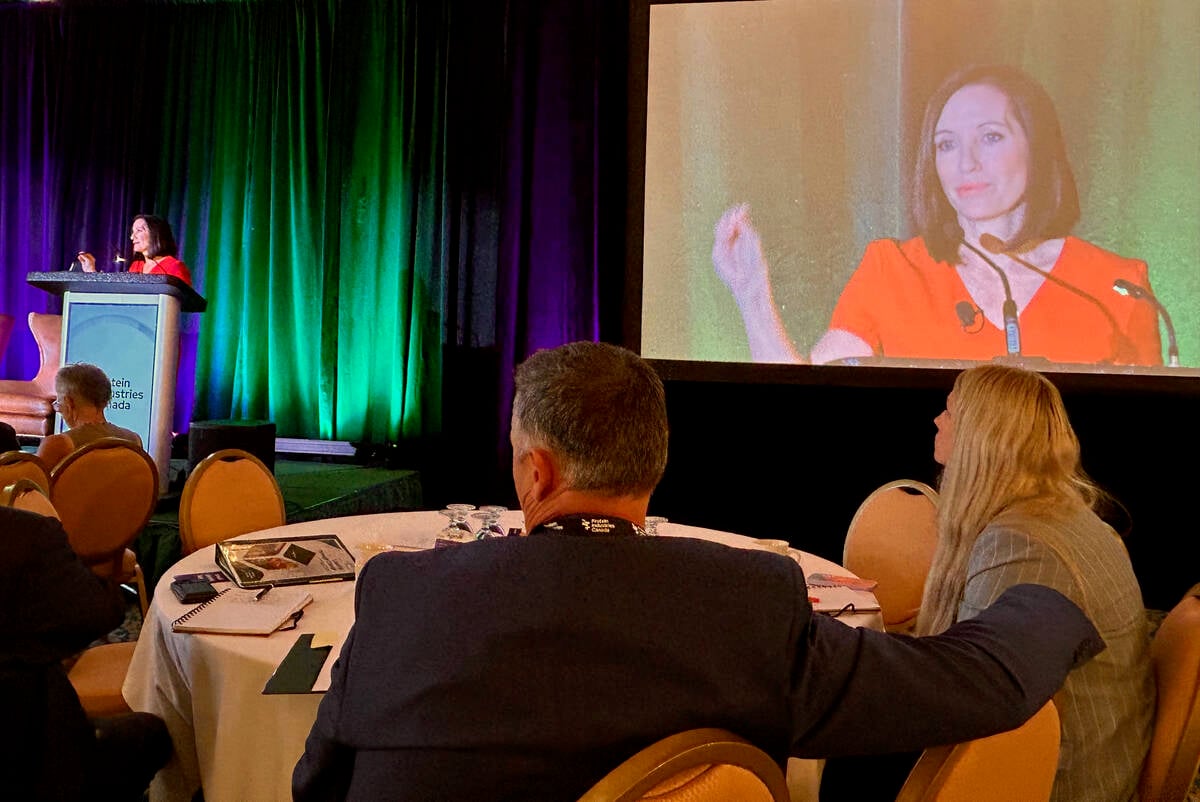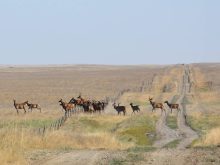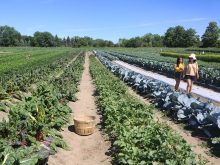Grain freight rates could rise by almost a dollar a tonne next crop year.
That translates into a potential transfer of $25 million from prairie farmers to the railways.
The Canadian Transportation Agency opened the door for an increase by bumping up the railways’ grain-hauling revenue cap by 3.5 percent for 2001-02. The increase reflects inflation-related increases in the railways’ costs.
Some farm officials and shippers say they expect the railways will respond by boosting rates in order to maximize their income.
“I feel that every time the revenue cap increases, the railways are going to come as close as they possibly can to that, so in my view it is a real rate increase,” said Canadian Wheat Board chair Ken Ritter.
Read Also

Canada told trade crisis solutions in its hands
Canadians and Canadian exporters need to accept that the old rules of trade are over, and open access to the U.S. market may also be over, says the chief financial correspondent for CTV News.
National Farmers Union transportation spokesperson Terry Boehm agrees.
“It’s always been clear that whenever there is an opportunity to extract more revenue, the railways are quite happy to do it,” he said.
However, railway officials say that won’t necessarily happen.
Ray Foot, assistant vice-president with CP Rail, said it’s too early to say exactly how the increase in the revenue cap will affect freight rates next year.
“It’s a factor,” he said. “But how it will impact specific prices at specific points, I couldn’t begin to tell you at this point.”
He acknowledged it would be normal for a business to try to recover inflation-related costs by raising its prices.
“But there are always other situations that come into play, including the level of competition and other things that go on.”
CN Rail spokesperson Jim Feeny agreed, saying the cap is one factor in a larger equation, and won’t necessarily translate into a 3.5 percent rate increase.
“We don’t have any immediate plans to adjust the export grain rates as a result of this announcement,” he said.
The 3.5 percent increase in the volume-related composite price index used to calculate the railways’ maximum revenue entitlement, commonly called the revenue cap, consists of two separate calculations:
- 1.9 percent is to make up for a shortfall in the cap for the current year, the result of higher than expected fuel prices in 2000.
- 1.6 percent reflects estimated inflation-related price changes in the 2001-02 crop year, including the costs of fuel, labor, material and capital.
Based on total railway revenue of $700 million, the 3.5 percent increase works out to roughly $25 million. Assuming average volume of 26 million tonnes, that works out to about 96 cents a tonne.
The calculation does not take into account savings gained by the railways due to improved efficiency, a process that used to occur through a detailed costing review every four years.
Rod Scarlett, executive director of Wild Rose Agricultural Producers, said it’s not fair that the cap calculation reflects rising expenses, but not operational savings.
“The revenue cap shouldn’t be going up, it should be going down,” he said.
Neil Thurston, director of rail policy for Transport Canada, said the new rules are based on the theory that operational savings will be passed back to farmers as a result of competition between the railways.
“There was a conscious decision not to do those reviews and just rely on the market forces coming into play,” he said, adding that if shippers feel rail rates are unjustifiably high, they can lodge a complaint through the final-offer arbitration process.
Boehm said the system is stacked in the railways’ favor, noting that while they can recover their increased costs through regulation, farmers have no such luxury.
“We have no regulatory body adjusting our income,” he said. “It would be nice to see an increase in the price of grain to reflect our higher fuel prices too.”
Paul Earl of the Western Canadian Wheat Growers Association said as long as the railways and grain companies don’t have complete freedom to compete for grain business, as recommended in the Estey report, there will be limited ability to pass cost savings on to farmers.
Scarlett said the cap should also be adjusted to reflect a recently announced reduction in provincial fuel taxes in Alberta.
However Jim Riegle, a rail costing specialist with the transport agency, said that came after the new cap had been calculated and it’s too late to make any changes.
















